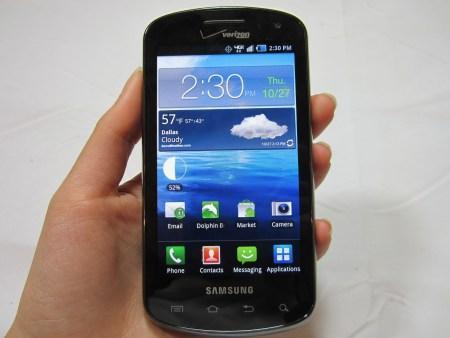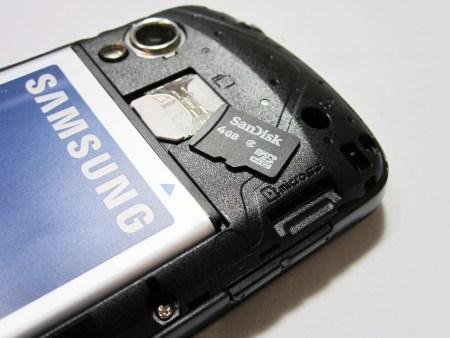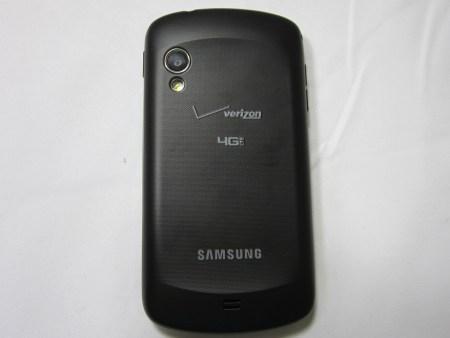
Whereas most U.S. carriers were satisfied with one Galaxy S device, Verizon just can't get enough. Along with the standard Galaxy S model that Samsung made for several wireless carriers, Verizon also picked up the Continuum, a Galaxy S phone with a new "ticker" display below the main display. On top of that, Verizon now has a new Galaxy S device, the Stratosphere. For the most part, this is the same Galaxy S that you can get on pretty much any wireless carrier, but there are a few improvements. The Stratosphere ships with Android 2.3 Gingerbread, a newer version of Samsung's TouchWiz UI, and a physical keyboard. It is unique for Verizon's line-up in that it's the only LTE device that packs a physical QWERTY. If those two features are must-haves, then your choices are slim, but does that automatically mean the Stratosphere is a no-brainer?
In terms of hardware, the Stratosphere is the whole package. The 4-inch screen is what most would call a "perfect medium" between too big and too small. On top of that, the Stratosphere is packing a Super AMOLED display - some of the best display technology on the market. I wish that Samsung had opted to go with their new Super AMOLED Plus technology, but I can understand where they're coming from. (The Super AMOLED Plus display was saved for the Galaxy S II.) Regardless, this display is beautiful. Colors are rich and vibrant. The contrast you'll see in dark colors on a Super AMOLED display is fantastic and the clarity is amazing. Overall, it's just a stunning display. Its resolution of 800x480 won't give you the most pixels per inch, but the technology is what really 'wows' you.
For a phone with a physical keyboard, the Stratosphere feels quite slim. You're going to notice the extra bulk, but Samsung has done a good job of minimizing it as much as they could. The phone measures 4.96-inches tall, 2.54-inches wide, and .55-inches thick and weighs 5.8 ounces. As with most Samsung devices, the Stratosphere's body is made entirely out of plastic. The back cover features a textured finish instead of a glossy finish which cuts down on fingerprints. Despite being made out of plastic, the device feels solid.
Samsung spread out the buttons and ports on this phone. The left side of the device contains only the volume rocker buttons, the bottom houses only the microUSB port, the right side has one singular button for Power, and the top is where you'll find the 3.5mm headphone jack. An LED notification light is located on the front of the phone, next to the front-facing camera. There is a microSD card slot located underneath the battery cover on the left side. The phone ships with a 4GB card to supplement its 2.2GB of user-available internal memory. Additionally, you can install an up to 32GB memory card using the microSD card slot.

If you're familiar with Android, you know that when a phone ships with version 2.3, the latest version available, it's a big deal. If you're new to Android, well, trust me, it's a big deal. This version brings features like a redesigned virtual keyboard, new copy and paste functionality, improved power management (read: better battery life and smoother performance), and support for multiple cameras which will come in handy since the Stratosphere has a front-facing camera. We don't always discuss these improvements in our reviews, but considering that there are some versions of this very device (Galaxy S) that don't have this version of Android, it's a noteworthy feature. On top of having the latest version of the OS, Samsung also included a newer version of their UI, TouchWiz. This means that some of their custom widgets have been redesigned to look more sleek and some of the "cartoonish" aspects of the UI have been toned down. You still have a four-shortcut dock at the bottom of the homescreen, the app drawer still has an iOS-ish feel to it (minus the colored squares bordering each app), and Samsung's custom virtual keyboard and messaging interface is the same, just to name a few of the customizations to Android you'll notice. Version 4.0 of TouchWiz brings even more visual improvements, but this version is still a step up for users.
The Stratosphere is powered by a 1GHz Samsung Hummingbird processor. This is the same processor that 'wowed' the world a year ago when the Galaxy S was first announced. It has become a little dated in light of all of the dual-core processors that are flooding the market. Still, time doesn't change speed, it only changes our perception of it. While testing the Stratosphere, I had very few problems with the processor and overall performance. The place where I had the most problems was while web browsing. Pinch-to-zoom was choppy and I noticed significant checkerboarding. Everyday tasks were completed with little to no lag, but the occasional hang-up did occur.
Speaking of web browsing, the Sratosphere is a 4G device that makes use of Verizon's LTE network. Verizon's site advertises average data speeds of 6-12 Mbps. I was blown away when my first few speed tests results were 25-27 Mbps. I had to double-check to make sure I wasn't connected to WiFi. After testing the phone in other parts of the city, speeds evened out at 6-7 Mbps, but the majority of my speed test results were still 20-27 Mbps. Keep in mind that these speeds are not guaranteed. You may not reach these speeds no matter how good coverage is in your area. However, color me impressed. I was disappointed by the speeds I recorded when the phone dropped down to 3G. My average in these scenarios was 200-300 kbps. Verizon's EV-DO Revision A network usually delivers faster speeds where I'm located, but I'm guessing that if you're going to buy the Stratosphere, you're probably in a 4G market.
Being nearly an exact replica of the other Galaxy S device with a physical keyboard, the Epic 4G on Sprint, the Stratosphere's QWERTY is a familiar sight. This is arguably one of the best physical keyboards on the market. The five-row design is spacious, allowing plenty of room for a number row, Spacebar row, as well as navigational arrows and the four Android shortcuts. The rubbery texture of each key along with the island-style layout makes typing quickly very easy. Despite being made out of rubber, the keys are firm, but the material means the traction and tactile feedback is excellent. I had very few problems with the keyboard. Measuring about 4.5-inches wide, it may be difficult to type on for those with smaller hands. Other than that, this keyboard is just plain awesome.
The Stratosphere is equipped with a 5-megapixel autofocus camera with a single LED flash as well as a 1.3-megapixel front-facing camera. The rear-facing camera captures 720p HD video and includes features like Action Shot, Continuous, Panorama, and more. Pictures taken with the Stratosphere's camera were clear and color saturation was great. Colors looked bright and the amount of detail was good. This camera will not be able to replace your point-and-shoot camera, but for uploading pictures, sharing snapshots from vacation, or for capturing a beautiful sunset, it worked well. HD video quality suffered a bit, though audio quality was outstanding. Overall clarity of the video could use some improvement. I was slightly disappointed by the video capture capabilities of the camera.

I was impressed by the performance offered by the Stratosphere's 1800 mAh battery. Granted, your standards have to be lowered a bit since Android phones historically have terrible battery life and 4G makes it even worse. Still, my initial test run resulted in sixteen hours of battery life with normal use of checking e-mail and Twitter, web browsing, streaming music, and with background updates on. That should be enough to take you through a full day, though you will definitely have to charge the battery every night. On standby with background updates still turned on, the battery lasted about one full 24-hour day. Keep in mind that battery life is subjective and will vary depending on usage habits.
So yes, the Stratosphere is just like every other Galaxy S device out there except it was released a year later. Is that a bad thing? It is if you're keen on having the latest and greatest. Otherwise, the Stratosphere is a solid 4G device with a beautiful display and an excellent QWERTY keyboard. Are there better phones out there? Absolutely. But if you need a physical keyboard and you're in a 4G area, the Stratosphere is your best option.
What's Good: Beautiful Super AMOLED display; excellent physical keyboard; Android 2.3 Gingerbread; newer version of TouchWiz UI; good battery life for a 4G Android device; 4G LTE.
What's Bad: Otherwise great processor performance was marred by a choppy web browsing experience; poor HD video capture quality.
The Verdict: If you like having a physical keyboard and you're in 4G coverage, buy the Stratosphere. If you don't need a physical keyboard, perhaps look into one of Verizon's so-called "superphones".